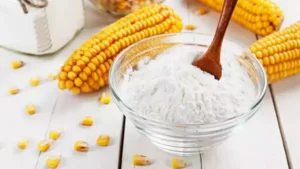Menstrual pain, also known as dysmenorrhea, is a common issue for many women during their menstrual cycle. This pain can range from mild discomfort to severe and debilitating pain, making it difficult for women to carry out their daily activities. But what exactly causes menstrual pain, and how can it be managed?
The cause of menstrual pain is related to the release of prostaglandins, which are hormone-like substances that are produced in the uterus. Prostaglandins cause the uterus to contract and expel its lining, which is what causes menstrual cramps. The more prostaglandins produced, the more intense the cramps will be.
In addition to menstrual cramps, some women also experience other symptoms during their periods such as bloating, headache, nausea, fatigue, and back pain. These symptoms can be related to the hormonal changes that occur during the menstrual cycle and can be exacerbated by the production of prostaglandins.
There are also other factors that can contribute to menstrual pain, such as endometriosis, fibroids, and pelvic inflammatory disease (PID). Endometriosis is a condition where the tissue that normally lines the inside of the uterus grows outside of it, causing pain and discomfort. Fibroids are noncancerous growths in the uterus that can also cause pain, heavy bleeding, and other symptoms. PID is an infection of the reproductive organs that can cause pain and discomfort during menstruation.
So how can menstrual pain be managed? The first step is to identify the underlying cause of the pain. If you are experiencing severe or persistent pain, it is important to consult your healthcare provider for a proper diagnosis and treatment plan.
In the meantime, there are several things you can do to manage menstrual pain. Over-the-counter pain relief medication, such as ibuprofen or naproxen, can be effective in reducing menstrual cramps. Heating pads, warm baths, and gentle exercise can also help to ease menstrual pain.
It’s also important to maintain a healthy diet and lifestyle. Eating a balanced diet that is rich in fiber, fruits, and vegetables can help to reduce inflammation and support hormonal balance. Staying hydrated, getting enough sleep, and reducing stress can also help to manage menstrual pain.
In some cases, hormonal birth control can also be effective in reducing menstrual pain. This works by suppressing ovulation and reducing the production of prostaglandins. There are several different types of hormonal birth control, including the pill, the patch, the ring, and the implant, and your healthcare provider can help you choose the best option for you.
Alternative therapies, such as acupuncture, massage, and yoga, can also be helpful in managing menstrual pain. These therapies work by reducing tension and relaxing the muscles, which can help to ease menstrual cramps.
In conclusion, menstrual pain is a common issue for many women during their menstrual cycle. The cause of menstrual pain is related to the release of prostaglandins, which cause the uterus to contract and expel its lining. There are several things you can do to manage menstrual pain, including over-the-counter pain relief medication, lifestyle modifications, hormonal birth control, and alternative therapies. If you are experiencing severe or persistent pain, it is important to consult your healthcare provider for a proper diagnosis and treatment plan.







